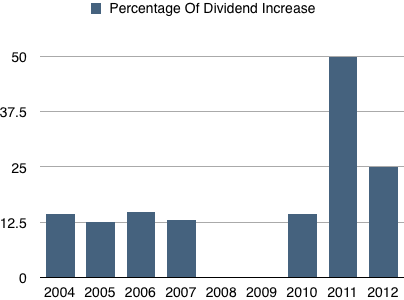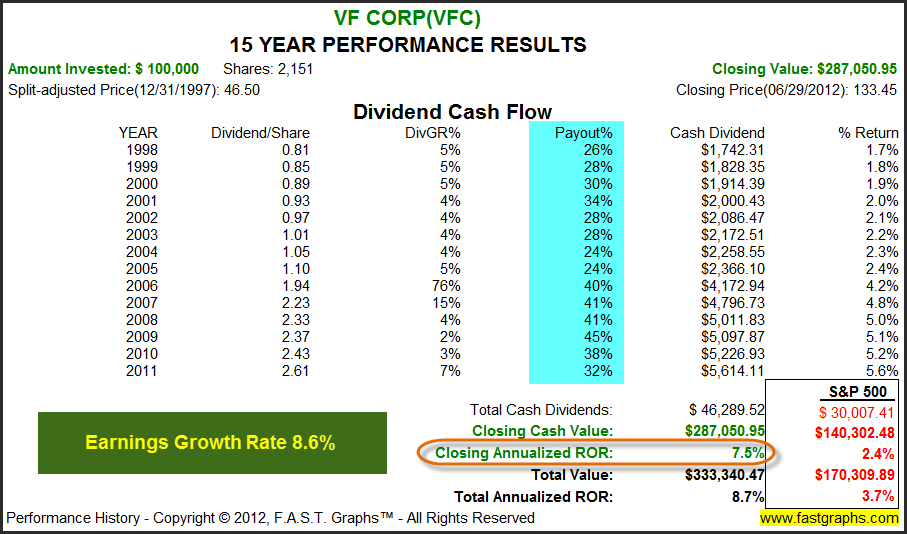The Dividend Puzzle The Relationship Between Payout Rates and Growth
Post on: 26 Июнь, 2015 No Comment

by Stanley Block
In one of the most surprising research developments over the last four decades, Robert Arnott and Clifford Asness published an article in the January/February 2003 issue of the Financial Analysts Journal entitled Surprise! Higher Dividends = Higher Earnings Growth.
The article carries more than normal credibility in that Mr. Arnott is a prior editor of the prestigious journal, and Mr. Asness is on the editorial board. In the 2003 publication the authors stated, The historical evidence strongly suggests that expected earnings growth is fastest when current payout ratios (of dividends) are high and slowest when payout ratios are low.
This would appear to be a form of academic betrayal, as virtually every textbook and article on dividends suggests that low dividend-paying stocks provide the greatest growth potential. The typical academic literature is even backed up by the sustainable growth model measure of valuing stock prices, which suggests that future growth is largely supported by the percentage of retained earnings that is reinvested in the corporation (and not paid out as dividends).
The academic rebels, however, back up their high dividend, high earnings evidence with the argument that companies that pay high dividends are generally confident in their ability to provide strong earnings growth in the future. Were this not the case, the authors suggest, the firms would hoard each dollar of current earnings in a so-called contingency fund to protect against future developments.
Another explanation by the authors is that high earnings retention and a low dividend payout may signal an attempt at empire-building by current management. In order to develop a larger enterprise and the higher executive compensation that often goes with that, management may engage in developmental projects that do not represent the best interest of stockholders. While this is not always the case, it happens often enough to capture investors attention. One need only look at the evidence on corporate divestitures and spin-offs of unwanted divisions to realize that many prior empire-building mistakes by management have to be corrected at a later date.
The controversial 2003 research by Arnott and Asness was further affirmed by Ping Zhou and William Ruland in the May/June 2006 issue of the Financial Analysts Journal. These authors went from the aggregate market data used in the initial study to a company-by-company analysis and reached the same conclusion. In the introduction to their study, the authors state: Our tests also show that high-dividend-payout companies tend to experience strong, not weak, future earnings growth.
While the evidence from these two comprehensive research studies questions the traditionally assumed relationship between dividend payout and growth, it is not intended to override the evidence on companies in the early stages of growth. No one would suggest that Oracle or Microsoft would have been well advised to pay dividends to stockholders as they were just beginning their road to success. The thrust of the two cited studies applies more to stocks that are in their mid-growth phase and that are listed in the S&P 500 index, the Dow Jones industrial average, or similar stock market indexes.

Dividend Policy and Stock Price
This is where the great debate lies. There are enough research studies on this topic to fill up a university library. Suffice it to say that the research study results are mixed (going all the way back to the 1960s), with as many studies supporting the dividend as value-enhancing as those that take the opposite viewpoint.
In this article, I present additional data that is more up-to-date and of potential interest to individual investors. The emphasis is on dividend yieldthe annual dividend divided by the stock price.
One way to assess the relationship between dividend yield and stock market performance is to look at stocks in the Dow Jones industrial average. The timeframe used here is the beginning of 2004 through June 30, 2008. The 30 stocks and their performances over that 4-year time period are shown in Table 1 .
In examining Table 1. you can see that the higher-yielding stocks do not necessarily appear to be sacrificing capital gains, nor do the lower-yielding stocks appear to have an exclusive claim to high capital gains.














